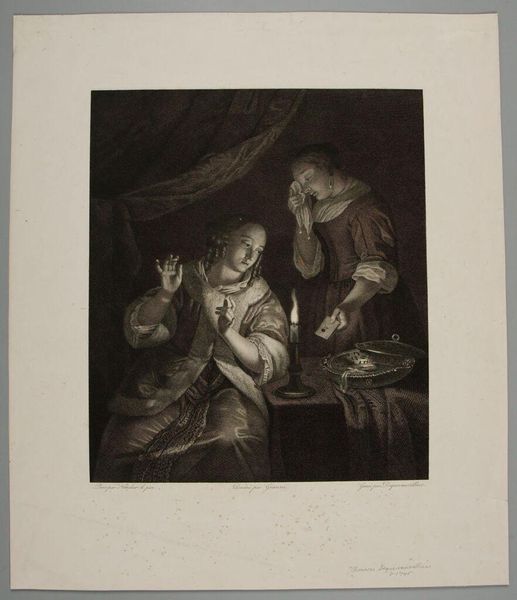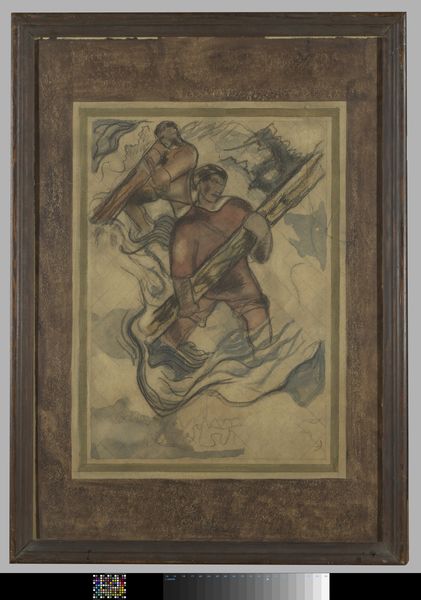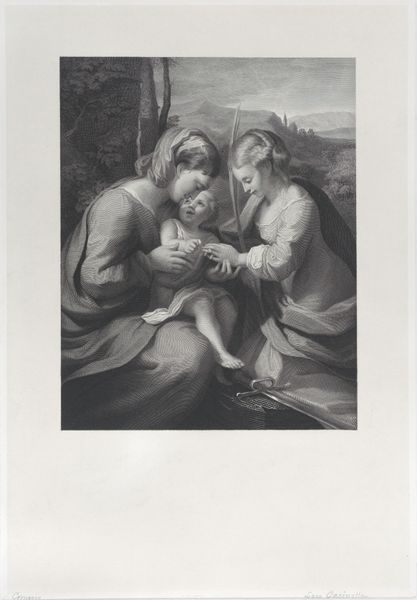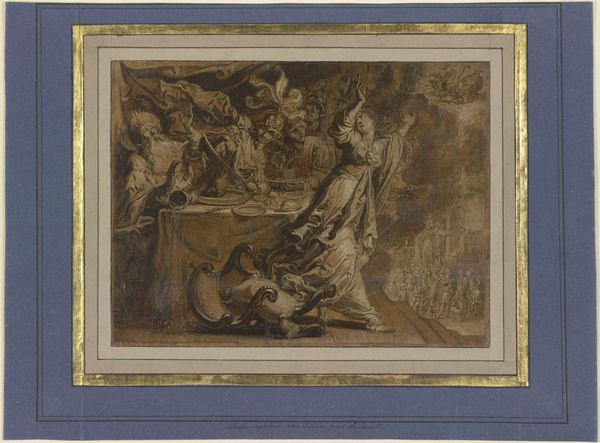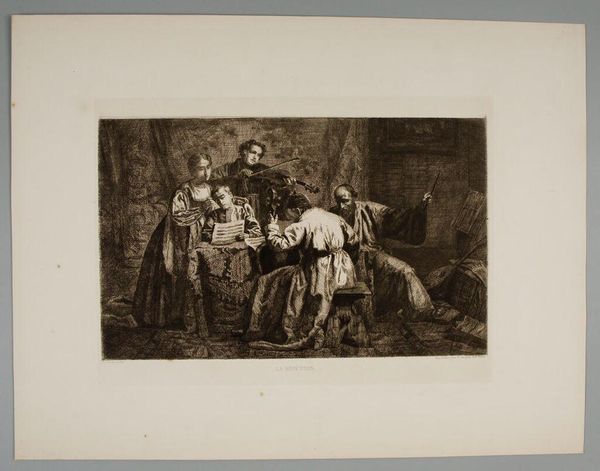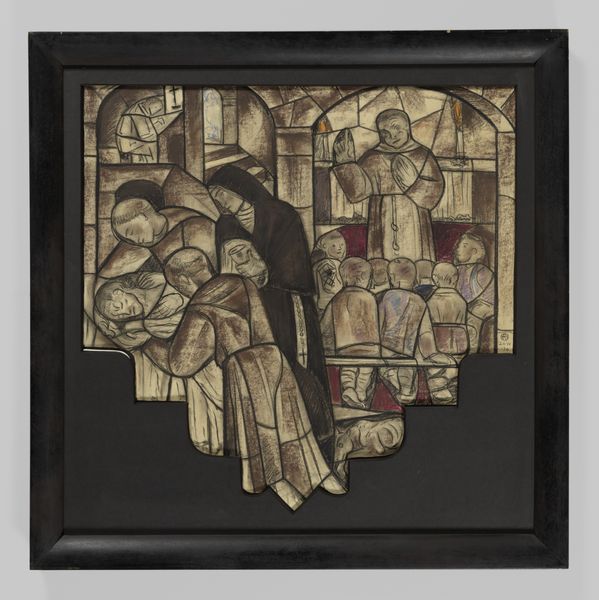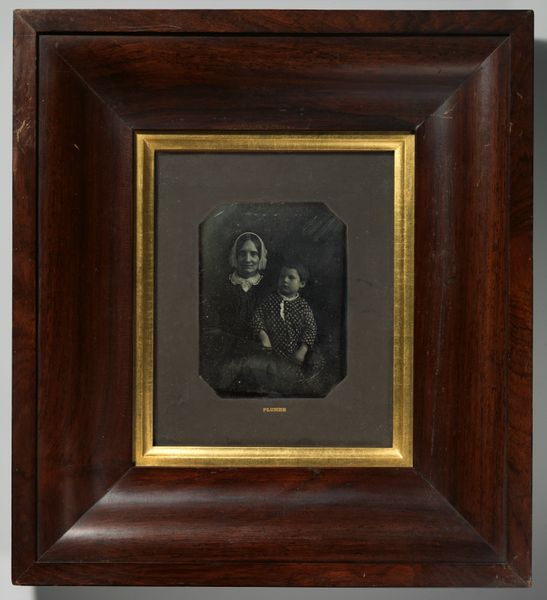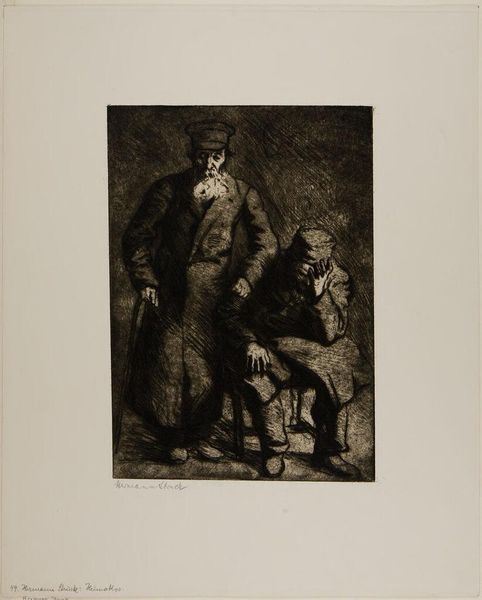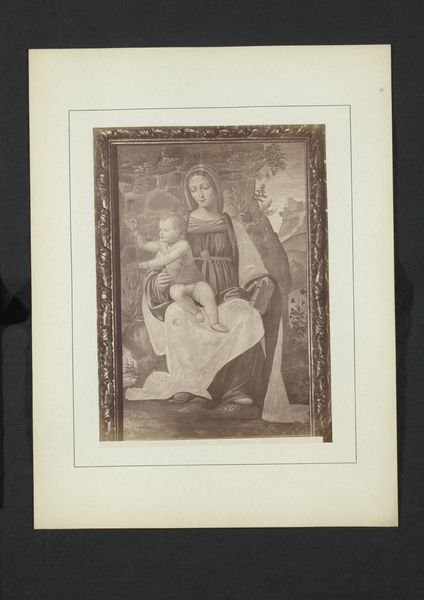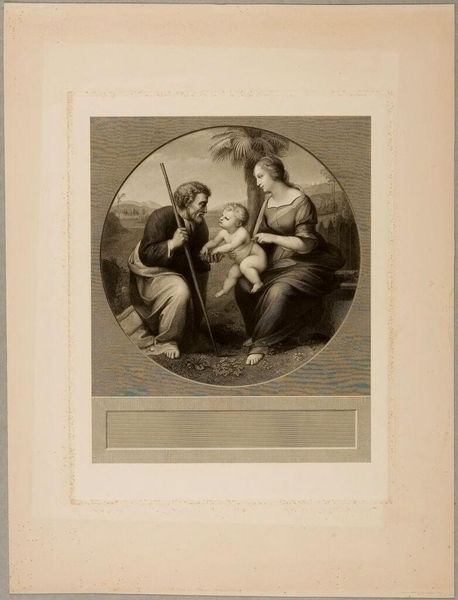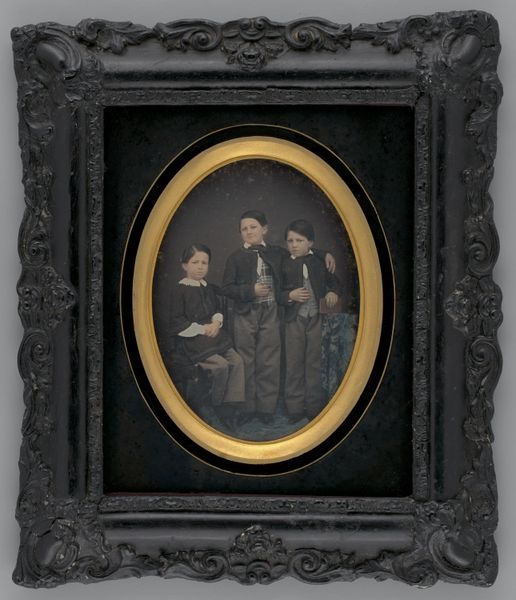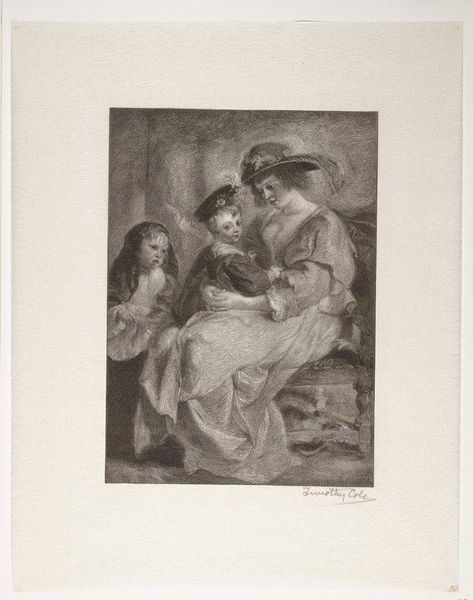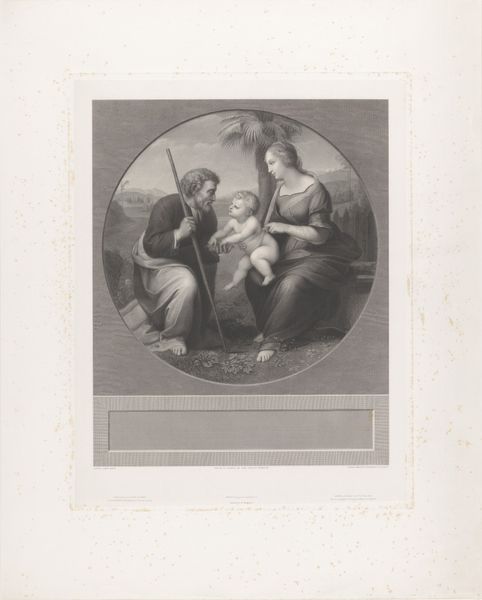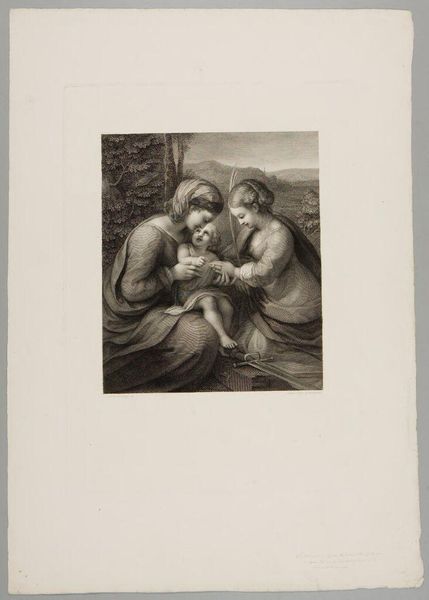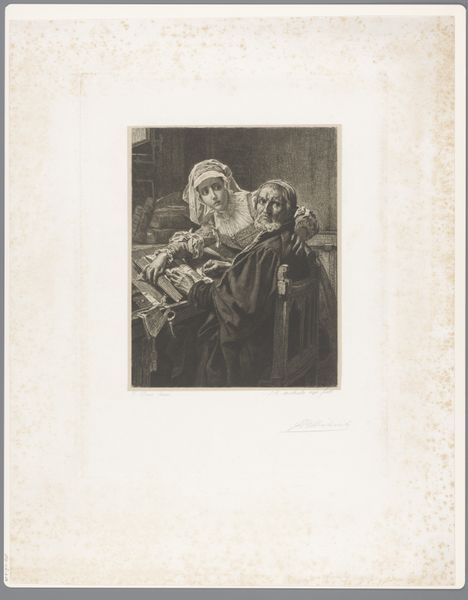
painting, oil-paint
#
portrait
#
painting
#
oil-paint
#
oil painting
#
genre-painting
#
academic-art
#
portrait art
#
realism
Copyright: Public domain
Editor: This is “The Bread,” an 1894 oil painting by Émile Friant. The large loaf being held has a palpable weight, emphasized by the dark and seemingly impoverished setting. The children's solemn expressions create a very serious mood. What can you tell me about this piece? Curator: That heavy bread isn't just food, is it? Friant is dealing in potent symbols here. Consider the light – see how it isolates the bread and the faces? It evokes not just hunger but a shared human burden. It speaks to a primal, universal need, doesn't it? Editor: Yes, it’s hard to ignore the somber mood, despite it just being about bread. The weight of responsibility, maybe? Curator: Precisely! Look closely at the central figure, his downturned gaze. He carries more than just bread; he embodies duty, sacrifice. It is such a mundane subject and it is elevated by symbolism, touching on hardship and perhaps even resilience. Don't you agree there’s something enduring in these poses? Editor: I think so. There's a sense of timelessness to it all, as if this scene could be happening at any point in history, despite the obvious indicators of its time. Curator: Exactly! Food is sustenance but here it's also a metaphor – for survival, community, shared struggle. Consider how potent even a simple loaf of bread can become through symbolic representation! Editor: I never considered all of that! It's amazing how much meaning can be layered into something so seemingly straightforward. Curator: And how the resonance of such images continues across time. We look at “The Bread” and feel its weight even today.
Comments
No comments
Be the first to comment and join the conversation on the ultimate creative platform.
